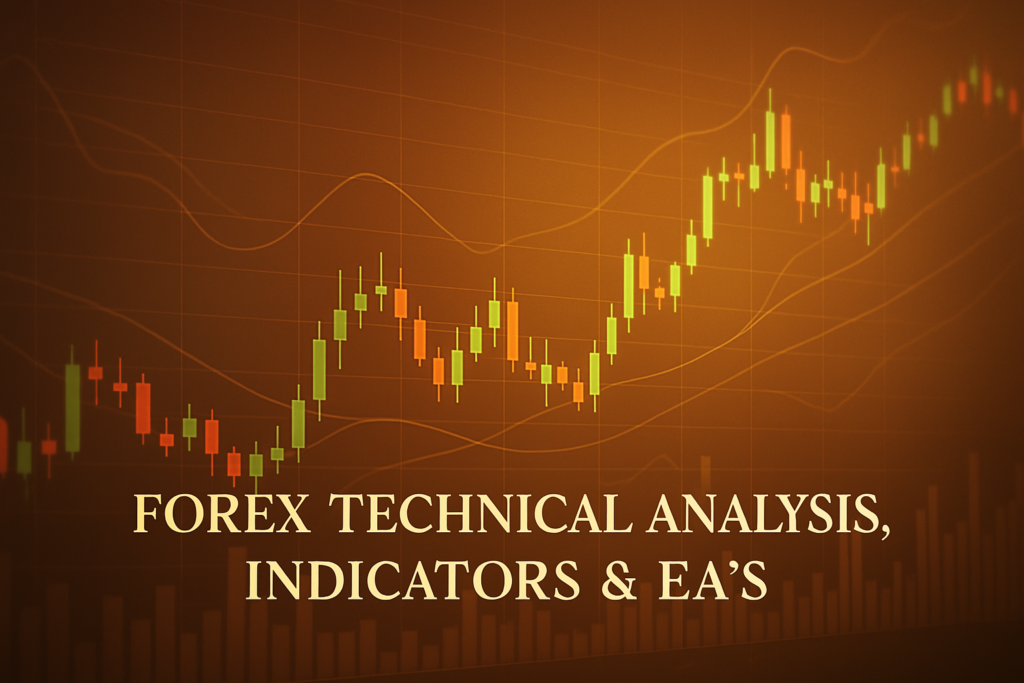
Fibonacci Bollinger Bands Indicator: Discover this powerful tool to enhance your Forex trading strategies and improve your market analysis.
The Fibonacci Bollinger Bands Indicator is a powerful tool in Forex trading. It combines two concepts: Fibonacci retracement levels and Bollinger Bands, to help traders spot potential price movements. When used correctly, it can offer insights into market volatility and price trends, making it easier for traders to make informed decisions.
However, many traders, both beginners and professionals, struggle with this indicator. They may not fully understand how to interpret its signals or how to effectively incorporate it into their strategies. This lack of understanding can lead to missed opportunities or costly mistakes. Therefore, knowing how to use the Fibonacci Bollinger Bands Indicator is essential for anyone looking to improve their trading game.
In this article, we will explore the Fibonacci Bollinger Bands Indicator, its history, advantages, disadvantages, and how to apply it effectively. We’ll also share trading strategies that can enhance your trading experience.
As we dive into the future of Forex trading, let’s take a brief look at the USDCHF forecast April 18, 2025, which is expected to reveal important trends and market movements.
What is a Fibonacci Bollinger Bands Indicator?
The Fibonacci Bollinger Bands Indicator is a combination of two tools that traders use in Forex. First, we have the Bollinger Bands, which create bands around the price chart. These bands show traders when the market is volatile or calm. Then we have Fibonacci levels, which help traders see potential support and resistance points. When we combine these two, we get the Fibonacci Bollinger Bands Indicator.
Types of Fibonacci Bollinger Bands Indicator
There are several types of Fibonacci Bollinger Bands Indicators. Here are a few:
- Simple: This is the most common type, using basic calculations.
- Exponential: This version gives more weight to recent prices, which can reflect current trends better.
- Weighted: This type considers the importance of various price points differently.
How Fibonacci Bollinger Bands Indicator Smooths Out Price Action
One of the key benefits of using the Fibonacci Bollinger Bands Indicator is how it smooths out price action. This means that instead of seeing every little price movement, traders can focus on the bigger picture. The bands help highlight trends, making it easier to spot buy or sell signals.
Common Periods Used and Why
Traders often use specific periods when applying the Fibonacci Bollinger Bands Indicator. Some common periods include 20, 50, or 200 days. These periods are popular because they provide a good balance between short-term and long-term trends. By adjusting the period, traders can tailor the indicator to fit their trading style.
The History of Fibonacci Bollinger Bands Indicator: How It Became Popular
Origin of Fibonacci Bollinger Bands Indicator
The Fibonacci Bollinger Bands Indicator was created by John Bollinger in the 1980s. He wanted to develop a tool that could help traders understand market volatility better. By integrating Fibonacci levels, he created a unique indicator that many traders found beneficial.
When Did Traders Start Using It Widely?
After its introduction, the Fibonacci Bollinger Bands Indicator gained popularity in the 1990s. Traders began to realize its potential in identifying price movements and trends. As more traders shared their success stories, the indicator became a staple in many trading strategies.
Real-Life Stories
Many professional traders have credited the Fibonacci Bollinger Bands Indicator for their success. For example, a trader might use this indicator to identify a strong uptrend. They could enter a trade at a Fibonacci retracement level, and as the price moves in their favor, they might secure significant profits. These stories showcase the real-world impact of using this powerful tool.
Advantages and Disadvantages of Fibonacci Bollinger Bands Indicator
Advantages:
- Helps Identify Trends Easily: The bands clearly show when the market is trending, making it easier to make decisions.
- Useful for Dynamic Support and Resistance: The Fibonacci levels help traders find potential support and resistance areas.
- Works Well for Crossover Strategies: Traders can use this indicator to spot crossovers, which often indicate strong price movements.
Disadvantages:
- Lags Behind Price Movements: Because the indicator is based on past prices, it may not react quickly to sudden market changes.
- Can Give False Signals in Sideways Markets: In a ranging market, the indicator may provide misleading signals, causing confusion for traders.
How to Apply Fibonacci Bollinger Bands Indicator on MT4 & MT5
Step-by-Step Guide to Adding Fibonacci Bollinger Bands Indicator on Charts
To add the Fibonacci Bollinger Bands Indicator on your MT4 or MT5 platform, follow these simple steps:
- Open your trading platform and select the chart you want to analyze.
- Click on “Insert” in the top menu, then navigate to “Indicators.”
- Search for “Bollinger Bands” and select it.
- Adjust the settings to include Fibonacci levels if available.
- Click “OK” to add the indicator to your chart.
Customizing Fibonacci Bollinger Bands Indicator Settings
You can customize the Fibonacci Bollinger Bands Indicator to fit your trading style. Here’s how:
- Adjust the periods to suit your trading timeframe.
- Choose colors that stand out against your chart background.
- Select the type of bands you prefer, like simple or exponential.
Saving Templates for Easy Application
To save time, you can create a template for your customized Fibonacci Bollinger Bands Indicator. Simply set it up on one chart, click on “Template,” and then “Save Template.” You can load this template on other charts in the future, making it quick and easy to get started.
5 to 7 Trading Strategies Using Only Fibonacci Bollinger Bands Indicator
1. All-Time Frame Strategy (M5 to D1)
This strategy works across multiple time frames. Traders look for price action near the upper or lower bands. If the price touches the upper band, it might be time to sell, while touching the lower band could signal a buy.
2. Trending Strategies
In a strong trend, traders buy when the price is near the lower band and sell when it approaches the upper band. This strategy capitalizes on the momentum of the trend.
3. Counter Trade Strategies
Traders can use counter-trade strategies by looking for reversals at the bands. If the price reaches the upper band, they might look for signs of a reversal to sell, while a touch on the lower band could indicate a buy opportunity.
4. Swing Trades Strategies
This strategy involves waiting for the price to retrace towards the middle band before entering a trade. Traders can buy near the lower band or sell near the upper band to capture swings in the market.
5. Breakout Strategies
When the price breaks out of the bands, it can signal a strong move. Traders can enter a buy position when the price breaks above the upper band or a sell position when it breaks below the lower band.
6. Reversal Strategies
Traders look for potential reversals when the price reaches the bands. If the price bounces off the upper band, it could be a sell signal, while a bounce off the lower band could suggest a buy opportunity.
5 to 7 Trading Strategies Combining Fibonacci Bollinger Bands Indicator with Other Indicators
1. All-Time Frame Strategy (M5 to D1)
This strategy combines the Fibonacci Bollinger Bands Indicator with the RSI (Relative Strength Index). Traders buy when the price is near the lower band and the RSI is below 30, indicating oversold conditions.
2. Trend Confirmation Strategy
Using the Fibonacci Bollinger Bands Indicator with moving averages can confirm trends. Buy when the price is above the upper band and the moving average is rising, while sell when the price is below the lower band and the moving average is falling.
3. Divergence Strategy
Traders can look for divergence between the Fibonacci Bollinger Bands Indicator and the MACD. If the price is making new highs but the MACD is not, it may signal a reversal opportunity.
4. Volume Confirmation Strategy
Combining the Fibonacci Bollinger Bands Indicator with volume indicators can provide additional confirmation. Buy when the price touches the lower band with increasing volume, indicating strong buying interest.
5. Multi-Indicator Strategy
This strategy uses the Fibonacci Bollinger Bands Indicator, RSI, and MACD together. Traders can wait for the price to touch the bands, the RSI to signal overbought/oversold, and the MACD to confirm the trend before entering a trade.
6. Breakout and Pullback Strategy
Traders can use Fibonacci Bollinger Bands Indicator along with Fibonacci retracement levels. After a breakout, if the price pulls back to a retracement level near the bands, it might be an opportunity to enter a trade.
As we look ahead, let’s consider the USDJPY forecast April 17, 2025, which provides insights into potential market movements.
Top 10 FAQs About Fibonacci Bollinger Bands Indicator
1. What are Fibonacci Bollinger Bands?
Fibonacci Bollinger Bands combine the concepts of Bollinger Bands and Fibonacci retracement levels, helping traders identify price trends and volatility.
2. How do I use Fibonacci Bollinger Bands?
Traders use Fibonacci Bollinger Bands to spot potential buy and sell opportunities based on price action near the bands.
3. What time frames are best for using Fibonacci Bollinger Bands?
Fibonacci Bollinger Bands can be used effectively in various time frames, from M5 (5 minutes) to D1 (1 day).
4. Can I customize the settings of Fibonacci Bollinger Bands?
Yes, you can customize the periods, colors, and types of the bands according to your trading preferences.
5. Are Fibonacci Bollinger Bands suitable for beginners?
Yes, while they may require some practice to understand, Fibonacci Bollinger Bands can be a useful tool for traders at any level.
6. Can Fibonacci Bollinger Bands predict market movements?
While they can help identify trends, Fibonacci Bollinger Bands do not guarantee predictions; they should be used as part of a broader trading strategy.
7. What are the advantages of Fibonacci Bollinger Bands?
Advantages include helping identify trends easily, providing dynamic support and resistance levels, and being effective for crossover strategies.
8. What are the disadvantages of Fibonacci Bollinger Bands?
Disadvantages include lagging behind price movements and giving false signals in sideways markets.
9. How often should I check Fibonacci Bollinger Bands?
It depends on your trading style. Day traders may check them frequently, while long-term traders may check them less often.
10. Can I combine Fibonacci Bollinger Bands with other indicators?
Yes, combining them with other indicators can enhance your trading strategy and provide additional confirmation.
Conclusion
In summary, the Fibonacci Bollinger Bands Indicator is a valuable tool for Forex traders. It helps identify trends, support and resistance levels, and can be used in various trading strategies. Understanding how to apply this indicator effectively is crucial for maximizing its benefits.
As you explore different strategies, remember to test them in a demo account before risking real money. Practice makes perfect, and with time, you’ll become more confident in using the Fibonacci Bollinger Bands Indicator.
Get a broader view of this strategy with help from top sources The Balance, Federal Reserve
Expand Your Knowledge
- 📌 Forex Trading Learning Road Map
- 📌 Forex Trading Course with no Fees
- 📌 Forex Trading Issues, Problems, and Solutions
- 📌 Forex Daily Forecast & Live Updates
- 📌 Forex Fundamental & News Analysis: Tomorrow’s Market Movers & Trade Opportunities
- 📌 Forex Education Hub: Learn & Profit
- 📌 Forex Technical Analysis, Indicators & EA’s
Start Trading Today
Ready to take your forex trading to the next level? Open an account with Exness, one of the most trusted platforms in the industry. 👉 Sign Up Now and trade with confidence!
My recommended broker stands out with ultra-low spreads for beginners, instant withdrawals, and zero spread accounts for pro traders.
Trusted since 2008, lightning-fast execution, no hidden fees, and a secure, transparent trading environment—giving you the edge you need to succeed. 🚀
Watch this helpful video to better understand fibonacci bollinger bands indicator:
Note: The video above is embedded from YouTube and is the property of its original creator. We do not own or take responsibility for the content or opinions expressed in the video.
In this video, Akiva introduces the Fibonacci Bollinger Band indicator on TradingView, a popular tool among traders, especially those interested in Forex trading. The indicator ranks among the top 10 due to its unique approach to market analysis. To find it, users can navigate to the Community Scripts section on TradingView, where they can see a list of popular indicators. The Fibonacci Bollinger Bands, created by Rashad, stands out with over 27,000 likes. The reason behind its popularity stems from its unconventional approach, which diverges from traditional methods. This indicator employs a volume-weighted moving average (VWMA) instead of the typical volume-weighted average price (VWAP), making it simpler and more straightforward for traders to analyze price movements. The VWMA is represented by a purple line and, unlike the VWAP, it primarily considers volume, making it a useful reference point for traders.
The Fibonacci Bollinger Bands are integrated with Fibonacci levels, which are automatically included in the system, simplifying the process for users. The indicator measures the price movement from the central VWMA to the Bollinger Bands, reflecting three standard deviations of movement. During the demonstration, Akiva analyzes Apple’s stock on a five-minute chart from July 6, showcasing how the indicator provides significant support and resistance levels. He highlights instances where the price respects these Fibonacci levels, enabling traders to identify potential price movements. This indicator can be applied across various time frames, including one-minute, ten-minute, and thirty-minute charts. Akiva also discusses the settings for optimal use, noting that a 200-period average works well for day trading. Traders can customize their settings to include or exclude certain Fibonacci levels based on their preference. Overall, the Fibonacci Bollinger Bands indicator offers a novel and effective way for traders to engage with the market.
In trading, “slippage” refers to the difference between the expected price of a trade and the actual price at which the trade is executed. This can occur in fast-moving markets, where prices change rapidly, leading to a situation where a buyer may end up paying more than anticipated, or a seller may receive less. Slippage can affect trading strategies significantly, especially for those relying on precise entry and exit points. Understanding slippage is crucial for traders, as it can impact their overall profitability and risk management strategies. For more information on how slippage can affect your trades, check out this article on slippage.



